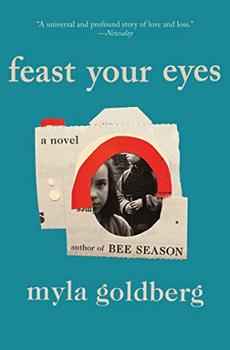Book Club Discussion Questions
In a book club? Subscribe to our Book Club Newsletter!
For supplemental discussion material see our Beyond the Book article, Controversial 20th Century Female Photographers and our BookBrowse Review of Feast Your Eyes.
Please be aware that this discussion guide will contain spoilers!
- The novel itself is the catalogue from Lillian Preston's photography exhibit at MoMA. What do we gain from this nontraditional narrative framing? Does it grant us better insight into the characters? The photography?
- The catalogue begins: "Feast your eyes, America. Here she is: America's Worst Mother, America's Bravest Mother, America's Worst Photographer, or America's Greatest Photographer." What does this proclamation reveal about the expectations of women as mothers and artists? How does it set the stage for what unfolds?
- On page 32, it's noted that Lillian's portraits, which often featured nudity, "were a way for her to study what lay at the core of people." How does this concept of nudity differ from that of a male artist depicting a nude woman? Can this be understood as the "female gaze"?
- Lillian is often adamant that there is no connection between her nonautobiographical photographs and her life. Do you think this is possible? What do you think is the art/life connection?
- How do Lillian's precluded abortion, pregnancy, and Samantha's eventual birth reflect the social and medical norms of the 1950s? What did it mean to choose to be a single mother in that era? Later in the book, when Jane chooses to get an abortion, the procedure has been legalized. How does Jane's legal abortion experience differ from Lillian's illegal one? In what ways is it the same?
- Lillian moves with Ken from New York to Brooklyn Heights in 1956. Do you think Lillian's photographs change as her New York setting changes? Can you discern a certain Manhattan era of her work? A Brooklyn era? How do we watch New York evolve over the years?
- Why do you think Lillian is so resolute against having another child with Ken? How does Lillian's choice to only have one child, Samantha, impact her life and work?
- On page 150, Samantha writes: "Photographs have an annoying habit of corroding whatever real memories you have of a moment until the photo is all that's left." What is the relationship between memory and photography?
- We are reintroduced to Lillian's most infamous photograph Mommy is sick in the catalogue notes. What does it reveal about abortion in pre Roe v. Wade abortion? What does the controversy surrounding it reveal about women's rights in the '60s? Did knowing the backstory about the photo impact your understanding of it?
- In response to the New York court case and the controversy, Samantha changes her name to Jane. In what other ways, was their mother-daughter relationship affected due to all the negative attention?
- Years later, after abortion became legal, Mommy is sick becomes popular, inspiring punk rock songs and granting Samantha a sort of cultural cachet. Can you think of other examples of works of art leading culture and having political impact?
- As she is dying, Lillian takes a series of portraits of herself tense with pain and then still. How do these photographs serve as a finale for her life's work?
Enhance Your Book Club
- Look at the collected photos in Sally Mann's Immediate Family, which caused controversy similar to Lillian's because it included shots of the photographer's nude children.
- Read Diane Arbus: Revelations, a collection of photos, letters, and diaries, put together by her daughter, telling the story of the photographer's life.
Unless otherwise stated, this discussion guide is reprinted with the permission of Scribner.
Any page references refer to a USA edition of the book, usually the trade paperback version, and may vary in other editions.
